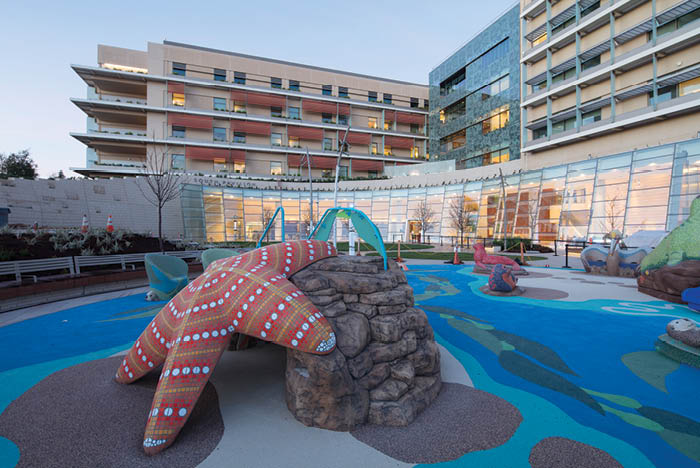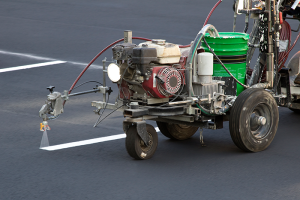Garden spaces continue to uplift

The Dawes Garden was named for Christopher Dawes, who served as the hospital’s president and CEO for 18 years.
Image courtesy of Doug Peck
Prior to the pandemic, the art curator and horticulture supervisor at Lucile Packard Children’s Hospital Stanford, Palo Alto, Calif., held monthly art and garden tours free to the public. Although those have been put on hold, the children’s hospital’s 3.5 acres of gardens and green space in which patients, families and staff can get some fresh air remain integral to the hospital’s mission of providing extraordinary care.
“When my mother [Lucile Packard] founded this hospital, she envisioned a place where children and families could receive truly healing care,” says Susan Packard Orr. “She saw the power that nature had to heal and uplift.”
Whether it’s engaging with nature in a playful and lighthearted way, looking for a sense of community or seeking solace during difficult times, Lucile Packard Children’s Hospital has built purpose into every inch of its green space.
From the moment people enter the hospital, nature is intertwined into the facility’s design. The half-climate entry offers a seamless transition from outdoors to inside via a wide, curving breezeway with slatted glass panels lining the walkway. Inside the lobby, a floor-to-ceiling sloping glass wall looks out to the Dawes Garden, which features a sea-themed play area for children and includes amphitheater-style seating for special events.
The Dunlevie Garden, located between the main and west buildings, contains engaging educational sculptures that children can physically explore. Winding pathways snake throughout the garden and lead visitors to discovery points. The garden’s interactive habitats include a puma den, a gopher burrow and a hollowed-out redwood tree trunk with climbing stairs. A life-sized sundial with large animal sculptures situated around its dial and a stone labyrinth invites visitors of all ages who walk through its maze.
The hospital’s healing garden — adjacent to the sanctuary — provides families with a tranquil and welcoming area for quiet reflection and a place to find solace and support. It features a meditational labyrinth and space for prayer or larger services.
“We set out to transform our patients’ families experience,” says Jill Sullivan, vice president of strategic space planning and general services. “The roles of nature and art in this hospital are intrinsic to that mission and honor the legacy of our founder. We are thrilled to be able to offer these spaces of beauty and healing to our community.”




